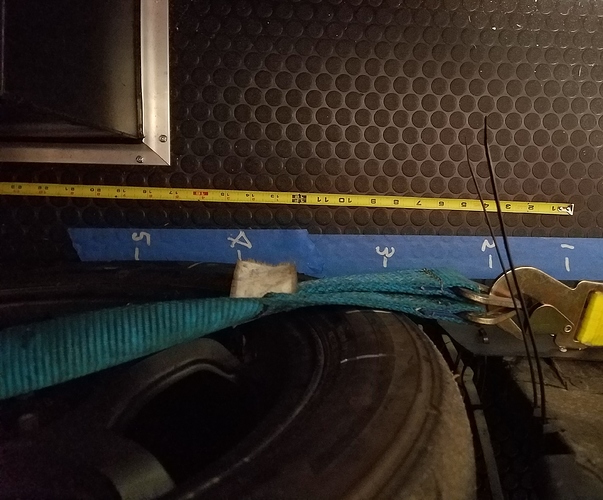Bottom line. I was surprised to have to move the car rearward 14" to get the tongue weight at the target 9%.
Details.
Bought a new 24’ trailer recently. The new trailer’s tongue is about a foot shorter than the old one, making the trailer that much shorter overall. What I don’t know is the position of the new trailer’s wheels, relative to the hitch ball. To the eye it looks about the same, but since the new trailer is shorter, the distance from hitch ball to center of trailer axles is probably a little different.
Altho the new trailer has torsion, vs. spring suspension like the old one, I don’t think that makes a difference on the scales, as long as the trailer is level.
Since I have a half ton and it’s a Ram and therefore has especially soft suspension, I’m motivated to keep tongue weight low. I do have airbags in the rear tho. Otherwise the truck would be on it’s bumpstops.
Interesting takeaways from the #'s.
-
With each move of car rearward, you can see weight come off the truck’s rear axle and on to the trailer axles, however, it’s not much weight transferring. That means that a helova lot of the trailer’s tongue weight is the weight of the trailer. The change of hitch weight averaged out to 18.3lbs for for every inch I moved the race car back.
-
Scale run 6 was w/o the WDH hitch. Predictably, the absence of the hitch was indicated by weight moving from the truck’s front to rear axle. The front got 140lbs lighter, the rear 180lbs heavier and the difference was on the trailer axles. Of course, should the rig porpoise over undulating pavement, the WDH would xfer more weight–that’s it’s job.
-
At 8500lbs, the loaded trailer weighs about 1000lbs more that I figured it would. I do have a lot of stuff in it, but I thought I’d made a decent stab at estimating.
The #'s are:
Front axle
Rear axle
Trailer axles.
Bare trailer weight before all my “up fitting:” 4067lbs.
Loaded trailer 8520lbs.
Truck. Prob 45gals fuel
3200 lbs
2820 lbs
The tongue weight isn’t just the additional weight on the rear axle. You have to account for the fact the when you put the trailer on, the front end gets light. So the weight on the rear axle is the sum of hitch weight plus weight xferred from truck front to rear.
Starting position. WDH on. Tongue weight 920lbs.
2980
3960
7600
Pos 2, 3.5" rearward. Tongue weight 880lbs.
2980
3920
7620
Pos 3, 4.5" more rearward. Tongue weight 820lbs.
3000
3840
7700
Pos 4, 6" more rearward. Tongue weight 800lbs. This is where the car will end up. Tongue weight % works out to 9.4%. A little light for the 10-15% US standard designed for 80mph, but well above the 5-7% Euro standard designed for 55mph. I tow at 62-65mph.
3020
3700
7780
Pos 5, 4" more rearward. Tongue weight 700lbs. Tongue weight of 700lbs which is a little light for a 8500lb trailer.
3120
3820
7720
Pos 6, as above but WDH off
2880
3880
7760
Moving the car vs. tongue weight. I moved the car 18" rearward and created 220lbs of tongue weight change. That’s 18.2lbs/in.
As mentioned, I settled on position 4. Rear axle load is 80lbs under the rear axle GAWR, and I’m 130lbs under the truck’s GVWR.
This pic is of the LF wheel. In the upper left corner is the trailer’s left-side wheel fender. Note that position 5 has the car’s front tire rearward of the fender leading edge. I bet the center mass of the car was about of the trailer’s rear axle. Pretty far rearward, eh?



